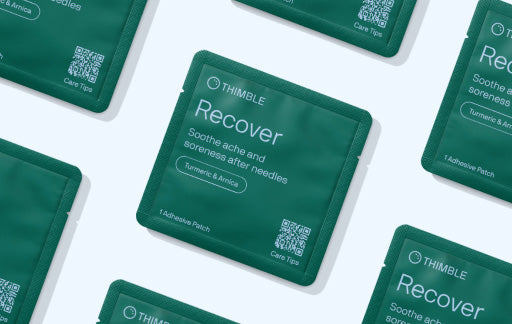When I read the the recent Forbes article, “The Next Big Thing in Healthcare Might Be Small: Micro-Innovations,” one line stayed with me:
“Meaningful change doesn’t always start with billion-dollar technology—it often begins with small ideas that remove friction from care.”
At Thimble, that philosophy is at the heart of everything we do. Because one of healthcare’s biggest sources of friction is also one of its smallest: the needle.
The Fear We Don’t Talk About
Every day, people avoid or delay important care—not because they lack access, but because they’re afraid of the shot.
Needle fear affects nearly 63% of people. It’s more than nerves; it’s a physiological fear response that can cause panic, fainting, and avoidance. Yet it’s often brushed aside as “just nerves” or “it’ll just be quick”
In medicine this plays out constantly. A child who needed a vaccine would hide behind a parent. A teenager would hyperventilate before a blood draw. Adults would cancel appointments rather than face another painful injection.
We tell patients to be brave—but bravery alone doesn’t make fear disappear.
1. Fear That Delays Care
Needle fear quietly fuels delayed or skipped care.
- Adults avoid vaccines and lab tests, postponing diagnosis and prevention.
- Children who have traumatic early experiences often become needle-avoidant adults.
- Patients managing chronic conditions miss critical monitoring because each visit includes a needle.
The result? Subtle but widespread gaps in preventive care that ripple through the system. We lose opportunities to detect illness early, protect public health, and build lasting trust.
2. Fear That Feeds Vaccine Hesitancy
During the COVID-19 pandemic, researchers discovered that nearly 10% of vaccine hesitancy stemmed from fear of needles—not misinformation.
That statistic floored me. It means millions of people who believe in vaccines still avoid them because the experience itself is distressing.
We’ve spent years improving vaccine access and education, yet overlooked the simplest barrier of all: emotional safety.
If an injection consistently causes pain, panic, or tears, avoidance becomes rational. Re-engineering that single moment—making it calm and painless—can shift behavior across populations.
That’s what Forbes means by micro-innovation: tackling a small, fixable problem that creates an outsized ripple of change.
3. Fear That Contributes to Provider Burnout
Needle fear doesn’t just affect patients—it impacts clinicians.
Ask any nurse or pediatrician about “shot days.” They’ll describe the emotional weight of comforting a crying child, the stress of holding a struggling patient, or the exhaustion of managing anxious parents.
These moments add up. The emotional labor of repeated distress erodes empathy and accelerates burnout.
When we reduce pain and fear, we’re not only improving the patient experience—we’re protecting the wellbeing of those who deliver care.
4. The Overlooked Opportunity
Healthcare invests billions in technology, yet often ignores the micro-moments where human connection happens.
Addressing needle fear is a simple, measurable opportunity to:
-
Increase compliance with vaccines and lab tests
-
Strengthen trust between patients and clinicians
-
Reduce procedure-related stress and burnout
- Improve overall patient satisfaction
These are outcomes every health system tracks—but few trace them back to something as small as a needle stick.
5. How We’re Tackling It at Thimble
At Thimble, we started with a simple idea:
What if we could take the sting—literally and figuratively—out of shots?
Our Prepare patch numbs the skin quickly, safely, and gently, helping patients experience injections without pain or fear.
It’s a small intervention, but its impact extends far beyond the moment of application. Parents feel less stress bringing children to appointments. Clinicians spend less time managing distress. Patients complete procedures calmly and confidently.
When Forbes recognized Thimble as an example of healthcare’s next wave of micro-innovation, it affirmed what we’ve believed all along: transformative change doesn’t have to start big—it just has to start somewhere.
6. A Call to Healthcare Leaders
If you lead a clinic, hospital, or public-health initiative, here’s my challenge: look for the small frictions you’ve learned to tolerate.
-
Where does fear slow care?
-
Where could compassion replace routine?
- What simple fix might change the tone of the entire encounter?
Micro-innovations like these don’t require massive budgets—they require empathy, curiosity, and a willingness to see from the patient’s point of view.
Closing
Needle fear will never vanish overnight, but it can be softened—with science, design, and heart.
Sometimes the most meaningful innovation in healthcare isn’t about new molecules or machines. It’s about making care feel safe again.
And if we can do that—one patch, one patient, one small innovation at a time—then maybe “small” really is the next big thing.
Read the full Forbes article: https://www.forbes.com/sites/adairalandry/2025/11/04/the-next-big-thing-in-healthcare-might-be-small-micro-innovations/


